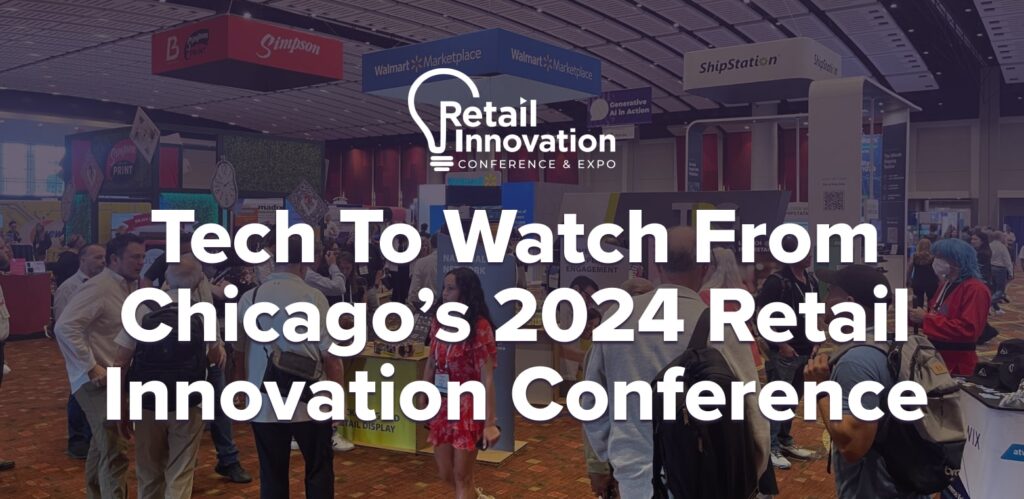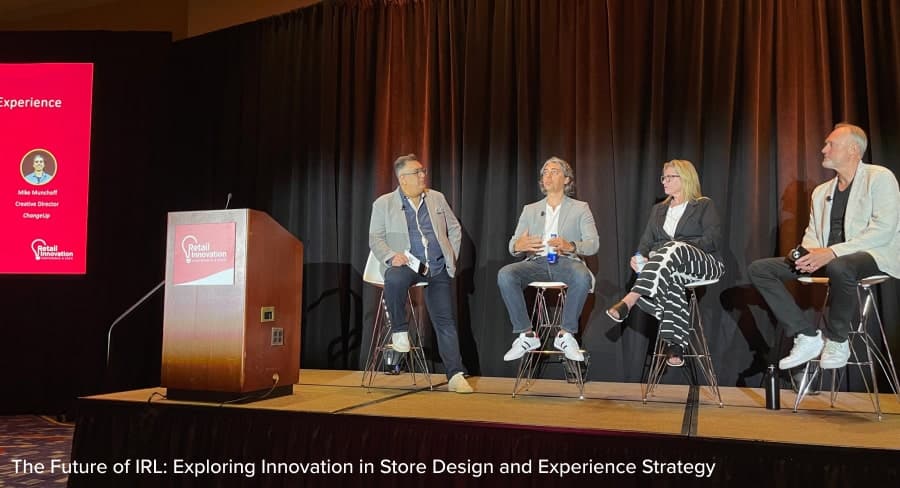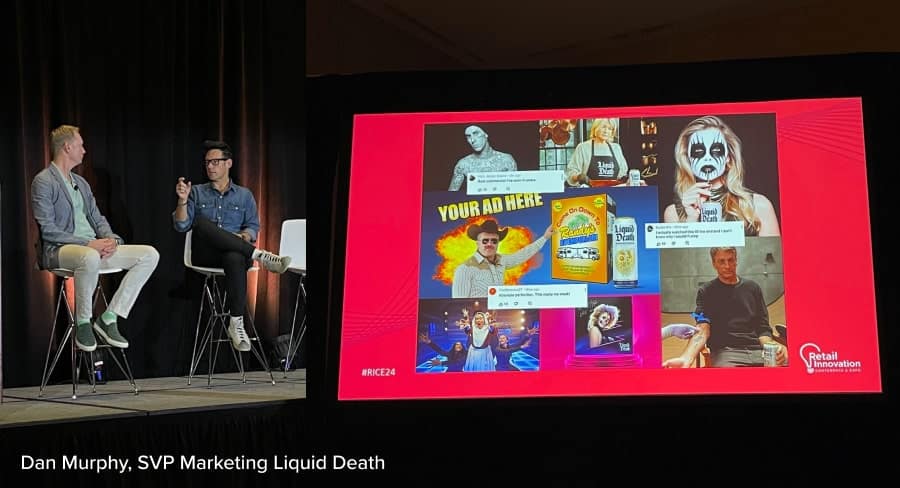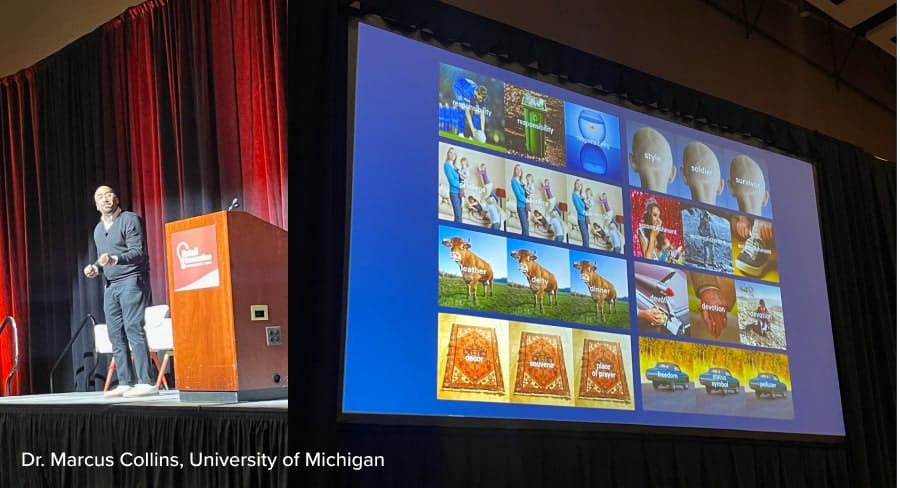Tech To Watch From Chicago’s 2024 Retail Innovation Conference

The Retail Innovation Conference & Expo 2024 explored AI, brand activations, immersive experiences and how culture can offer a better way to understand consumers than demographics.
The 2024 Retail Innovation Conference in Chicago was a hub of groundbreaking ideas and emerging technologies, setting the stage for the future of retail. This year’s conference highlighted the critical role of artificial intelligence (AI) in retail operations, with discussions emphasizing its transformative potential and ethical implications.
The Retail Innovation Conference 2024 also showcased innovative brand activations, demonstrating how immersive technologies like AR and VR can foster community and drive customer engagement. Additionally, keynote speakers emphasized the importance of cultural understanding in shaping consumer behavior and brand identity. Urging retailers to look beyond traditional demographics to connect more deeply with their audiences.

1. Incorporating AI in retail operations
At the conference, AI emerged as a focal point, underscoring its transformative potential and the diverse perspectives it brings to the retail industry. The discussion highlighted the widespread recognition of AI's importance, its ethical implications, and the practical challenges and opportunities it presents for businesses.
Broad Recognition of AI's Importance
In the “Panel: Talking to the C-Suite About The Future of Web3 & Emerging Tech”, Betsy Ziegler of 1871 noted that discussions around AI are widespread as businesses aim to increase awareness. Even if they are not directly involved with AI technologies. This broad conversation underscores AI's relevance across various sectors.
Consumer Engagement and Technology
Avoiding technical jargon and focusing on the consumer experience can help mitigate negative perceptions and make technology more accessible. Jordan Walbesser from Mattel explained that they use the term virtual collectibles instead of NFTs to avoid negative PR. Mattel emphasizes the seamless experience of these collectibles. This makes the technology behind them more approachable and appealing to consumers.
Generative AI and Artists' Concerns
Jordan Walbesser also addressed concerns among designers about the morality and fair use of AI-generated art. This discussion reflects the critical ethical considerations of AI in creative industries.
Measuring AI's Impact
The panel noted the difficulties in measuring AI's ROI and its indirect effects on growth and profit. This points to the need for better metrics and methods to justify AI investments.
Overcoming Barriers of Mistrust in New Tech
In the session “The Future of IRL: Exploring Innovation in Store Design and Experience Strategy”, panelists emphasized the persistent mistrust towards AI within the industry. To address this, they highlighted homomorphic encryption as a promising method to build trust by ensuring data privacy and security.
Additionally, the session suggested using AI to analyze data and measure the ROI of best practices, underscoring its potential to drive industry innovation. Despite the challenges, retail remains an exciting, fast-paced, and ever-changing sector, with AI poised to be the next accelerant of growth and transformation.

2. Connecting with customers through brand activations
Brand activations and customer connections were key themes at the conference. These topics emphasized the importance of creating engaging and personalized experiences.
Focus on Consumer Experience
During “How are Retail Leaders Investing in Growth?”, Hamid Saify and Bennett Fox-Glassman focused on loyalty programs and creating meaningful customer experiences. Hamid talked about Lucky Energy’s Mile High Club, which provides special benefits to build loyalty. Fox-Glassman pointed out how Macy’s uses iconic events like the Thanksgiving Day Parade to connect with their loyal customers.
Testing Grounds for Instant Feedback
Brand activations in non-commerce environments like pop-ups serve as valuable testing grounds for new ideas and technologies. These activations are meant to establish reach and test new ideas before a full market deployment. This approach allows brands to experiment and refine their concepts in a controlled environment that provides immediate feedback and insights into consumer behavior.
Angela Feathart provided an example where Coca-Cola tested mix-and-match vending machines in Canada during a brand activation. This trial provided valuable insights before a wider rollout. They also emphasized the post-COVID desire for immersive experiences and the need for brands to create environments that promote socialization and sustainability.
Community Building through Relevancy
Innovative brand activations can build community and enhance consumer engagement. Key recommendations include using cultural insights, creating meaningful loyalty programs, and ensuring activations resonate with the brand’s values and customer expectations.
Liquid Death emphasizes one creative campaign each month to stay relevant without overwhelming their audience or media contacts. They prioritize authentic, engaging content over expensive celebrity endorsements or overly produced material.
For instance, a recent campaign involved giving away a two-seater fighter jet, though it faced legal challenges. Despite this, Liquid Death’s unique campaigns generate valuable earned media, significantly boosting awareness and engagement. These campaigns often achieve up to four times the conversion rate of other incentives, even without discounts.

3. Using immersive experiences and gamification to foster new communities
In the panel "How Immersive Experiences are Shaping The Retail Environment," Keith Soljachic, Ambrosia March, and Eric Arvai explored the transformative impact of immersive technologies such as AR, VR, and 3D on customer purchasing decisions and engagement.
Engage Before Educating
Brands should prioritize engaging consumers with immersive and extended reality experiences before educating them about the technology behind these experiences. This method captures consumers' interest before introducing them to the complex aspects of the technology.
Gaming Experience Examples
Ambrosia March shared Wow Bao's innovative approach using Roblox for their Hot Buns Club campaign, which incorporated a virtual scavenger hunt that translated into real-life perks like coupons and free meals. This campaign not only engaged new customers but also fostered loyalty among existing ones, demonstrating the potential of the metaverse to educate and attract a broader audience.
Eric Arvai highlighted the successful integration of AI and blockchain through projects like the Wagmi Club, in collaboration with Coinbase. This initiative involved setting up Coinbase wallets at the EDC festival and putting human faces on NFTs, thereby fostering a community around these digital assets. He emphasized the importance of combining AI for personalization and blockchain for authentication to enhance customer experiences.
Campaign Insights
The panelists discussed the importance of community in driving technology investments and shared insights from their campaigns. Ambrosia noted that Wow Bao's Roblox campaign reached new demographics and increased awareness of their brand. For CMOs considering immersive technologies, Ambrosia advised aligning with the right partners to reach untapped audiences, while Eric recommended hands-on experimentation and quick iterations with lower KPIs to maximize learning and impact.
In-Store Experiences
Addressing questions, the panelists provided examples of immersive experiences that could be integrated into brick-and-mortar stores. Eric mentioned a Nintendo-themed experience where customers could physically interact with the environment, such as jumping and breaking a brick, reinforcing brand loyalty through expected yet engaging interactions. Keith suggested that immersive learning experiences could replace traditional methods like PDFs, offering a more engaging way for customers to interact with brands.
Overall, the panel underscored the significant role of immersive experiences in enhancing customer engagement, loyalty, and brand awareness in the retail environment. By leveraging AR, VR, and 3D technologies, retailers can create memorable, interactive experiences that resonate with a wide range of consumers.

4. Dropping demographics and understanding culture to create authenticity
Dr. Marcus Collins delivered an insightful RICE 2024 keynote on the significant role of culture in shaping consumer behavior and brand identity. Here are the key topics and points discussed:
Perception and Consumption
"Things aren't the way they are; they are the way that we see them." This highlights how our perception shapes our reality and influences our consumption choices. Consumption is driven by who we are rather than the value propositions of products. People use brands and products to signal their identities to the world.
Misleading Nature of Demographics
Traditional demographics (age, gender, location, etc.) are arbitrary labels and often fail to capture the true essence of individuals. Retailers must understand people's true nature and behaviors to predict their actions and preferences accurately.
Case Study: McDonald's
Years ago, McDonald's faced significant criticism for its perceived contribution to American diet and obesity issues, which led to the company being labeled as the most disliked in America in 2014. To counter this negative perception, McDonald's launched an ethnographic study to gain deeper insights into their customers beyond surface-level data.
This study revealed a universal truth among fans: everyone has a McDonald’s order, regardless of their fame or status. McDonald's leveraged this insight to create relatable and engaging marketing campaigns. For instance, partnerships like "Cactus Jack" with Travis Scott and Super Bowl commercials featuring celebrity orders contributed to substantial growth.
By focusing on cultural understanding, McDonald's successfully connected with their fans, resulting in double-digit growth without launching new products. This underscores the influence of culture on consumer behavior and brand success.
Implications for Retail
- Cultural Influence: Culture is the most influential force on human behavior. Retailers need to see people as individuals rather than just customers or demographic segments.
- Effective Partnerships: Successful partnerships and collaborations should be ideologically aligned and emotionally engaging. Brands should focus on loyal fans rather than detractors.
- Contributing to Discourse: Retailers should be part of the cultural discourse, contributing to what is considered legitimate and illegitimate in the cultural narrative. This involves understanding and respecting cultural practices to avoid missteps like cultural appropriation.
Key Takeaways
- Understanding Fans: The more a brand understands its fans, the more effectively it can influence them.
- Creative Courage: Brands should engage fans as peers, share creative control, and demonstrate courage in their marketing strategies.
- Perspective Shift: Changing how we see the world can transform our understanding and interaction with it. Brands need to adopt this perspective to stay relevant and impactful.
By focusing on cultural authenticity and understanding, brands can create deeper connections with their consumers and drive significant growth.
Subscribe to our newsletter
Get our blogs and the latest retail news delivered to your inbox monthly.
Recent Posts
5 Holiday Shopping Predictions & Recommendations for 2021
The pandemic greatly influenced celebrations and holiday shopping in 2020, but with normalcy on the horizon there are different 2021 holiday predictions that retailers should consider. Last year, the Covid-19 pandemic led to a decrease in holiday social gatherings. Although there were less family holiday celebrations and religious services, traditions such as decorating, gifts and…
Eye-Tracking VR Technology is Changing the Retail Industry
Retailers use virtual reality to conduct eye tracking consumer research that uncovers accurate shopper insights. The pandemic and rapid digital transformation in retail is pressuring brands to innovate and adapt their shopping experiences based on changing consumer behaviors. In order to quickly collect and understand consumer insights, many organizations have turned to virtual reality. Virtual…
7 Retail Industry Trends to Watch Out for in 2021
Today, the rapid advancements in technology have led to almost every facet of our lives shifting online, catering to a population that is more adaptive to the current times. The retail industry is no exception. The current world situation has vastly impacted retail industry trends in 2021, with an increasing number of people resorting to…


